[orc]The data of pending cases in the lower judiciary is hard to get by. The recently launched National Judicial Data Grid (NJGD) portal is a very important first step in that direction. The data available in the portal indicates that more than 2 crore cases are pending in the district courts as on date. More than 2/3rd of the pending cases are criminal in nature while the rest are civil in nature. At the current rate, it might take more than 10 years for the pending cases to get cleared.
High levels of pendency has been plaguing the judiciary in the country. Both the higher and the lower judiciary are grappling with this issue of pendency for quite some time now. While the data on pendency at the Supreme Court & the High Court level is available in some form, the data on pendency at the district court level has not been easily available. The recently launched National Judicial Data Grid (NJDG) is a good first step in that direction. The data on pendency, nature of pendency in all the district courts of the country is now available in the public domain. The portal has data on 15,342 judges in 459 districts across the country as on 27th September 2015.
Overall Pendency
The total number of pending cases, in all the district courts, as on 27th September, 2015 is more than 2 crore. While 67 lakh of these are civil cases, rest of the 1.34 crore are criminal cases. The number of pending criminal cases is twice the number of pending civil cases.
Situation in the States
In the states, Uttar Pradesh has the highest number of pending cases with 46.73 lakh followed by Maharashtra at 29.57 lakh. The other states in the top six are Gujarat (20.83 lakh), West Bengal (13.83 lakh), Bihar (13.41 lakh) & Rajasthan (12.55 lakh). The top three states of Uttar Pradesh, Maharashtra & Gujarat account for more than 48% of these pending cases.
In the states, Uttar Pradesh has the highest number of pending civil cases with 12 lakh followed by Maharashtra at 10.4 lakh. The other states in the top six are Karnataka (6.16 lakh), Gujarat (5.89 lakh), Tamilnadu (5.4 lakh) & West Bengal (4.32 lakh). In fact, these states and Rajasthan together account for more than 70% of the total pending civil cases.
As far as pending criminal cases is concerned, Uttar Pradesh has the highest number again with 34.7 lakh followed by Maharashtra at 19.16 lakh. The other states in the top six are Gujarat (14.95 lakh), Bihar (11.15 lakh), West Bengal (9.52 lakh) & Rajasthan (8.5 lakh). In fact, these states along with Odisha & Rajasthan account for more than 80% of the total pending criminal cases.
Nature of Pending Cases
Out of the 2 crore pending cases, more than 10% are pending for over 10 years while 18% are pending between 5 and 10 years. About 30% are pending between 2 and 5 years while the remaining 41.6% are pending for less than 2 years. In other words, 3 out of every 10 pending cases are more than 5 years old.
There are wide variations within states in the nature of pending cases. For example, 24% of the cases pending in Gujarat are over 10 years old, while this percentage is less than 1% for states like Kerala, Punjab and Haryana etc. In 15 states, more than 50% of the pending cases are less than 2 years old.
What about the last month?
The NJDG portal has data as on date and also has data for the last month (August 2015). More than 5.24 lakh cases were filed last month while 6.87 lakh cases were disposed last month. The four states of Maharashtra, Uttar Pradesh, Karnataka & Haryana account for more than 50% of the all the cases filed and disposed. More than a lakh cases were filed in Maharashtra last month.
In states like Bihar, Gujarat, Jharkhand, West Bengal & Maharashtra, the number of cases filed was more than the number of cases disposed in the last month.
How many more years to reduce pendency to Zero?
While the data for one month is not representative of the entire year, August was a normal month without any major court holidays. If the rate of filing and disposal in August is taken into consideration, then it would take little more than 10 years to clear all pending cases at an All India level. While civil cases might take 17 years to get cleared, the criminal cases might take a little more than 8 years.
Within states, there is again a wide variation in the rate of disposal. Six states (Bihar, Gujarat, Jharkhand, West Bengal, Maharashtra, and Jammu & Kashmir) would never be able to clear the pending cases given their performance in August. Nine states including Karnataka, Kerala, Assam, Andhra Pradesh & Telangana would be able to clear the pending cases in fewer than five years. Odisha might take more than 36 years to clear all pending cases given the current rate.
The NJDG Portal
The NJDG portal is a very important first step in making data of the lower judiciary available in the public domain. It has data & information up to the individual case level including the list of hearing dates, copy of the order etc. The only glitch in the portal is availability of data for more months (archival data). The portal should have historic data and not just data for the last month. And if the government wants people to do more analysis and help identify the bottle necks in the lower judiciary, the data has to be open in the true sense.
Data Analysis by Suman Kalyan



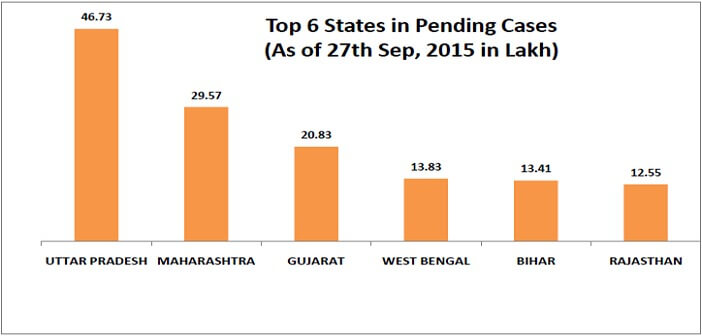
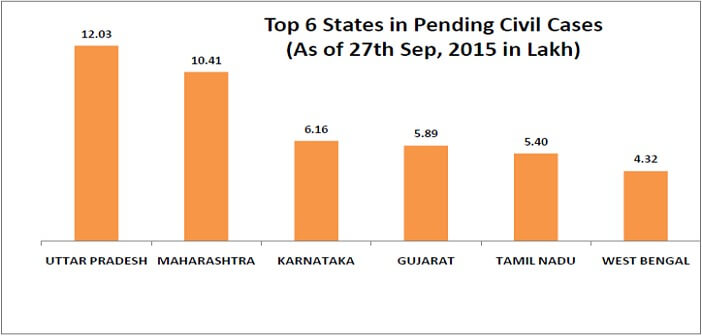
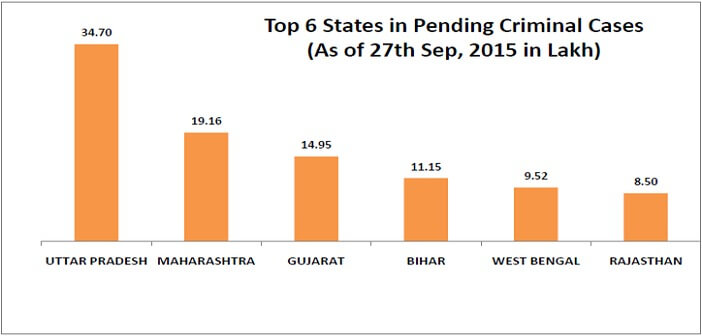
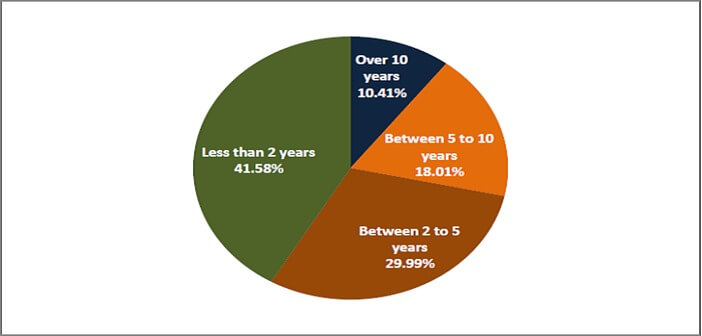
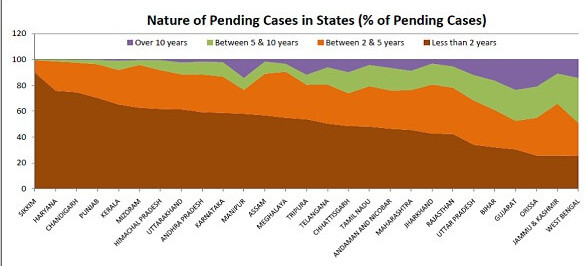
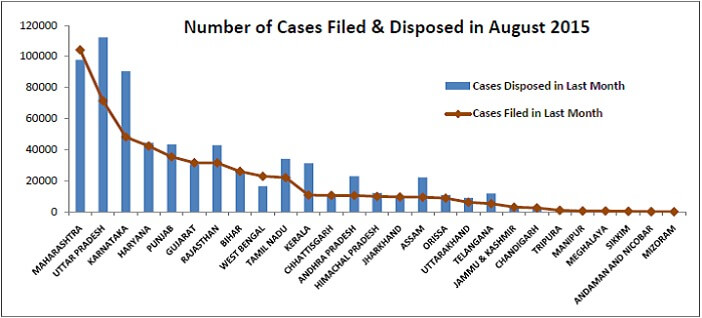

6 Comments
The State, being, by far, the biggest litigant contributes a large part to the staggering backlog clogging the courts. We need a pro-active litigation management strategy with large scale rehabilitation of the existing system and procedures…
Legal terrorism hazadiuos to nation
I could not find data for MP. Is it not a part of NJDG? Has the process started or not?
It is not yet part of NJDG
Hi Rakesh: Useful article on pending cases. I am looking for further analysing civil cases classifying cases by type (say Specific relief or by acts), decrees awarded, number of appeal stages cases go to etc. NJDG does not have this. Would you know where I get such data from for statistical analysis. Thanks
Such Granular data unfortunately is not available.